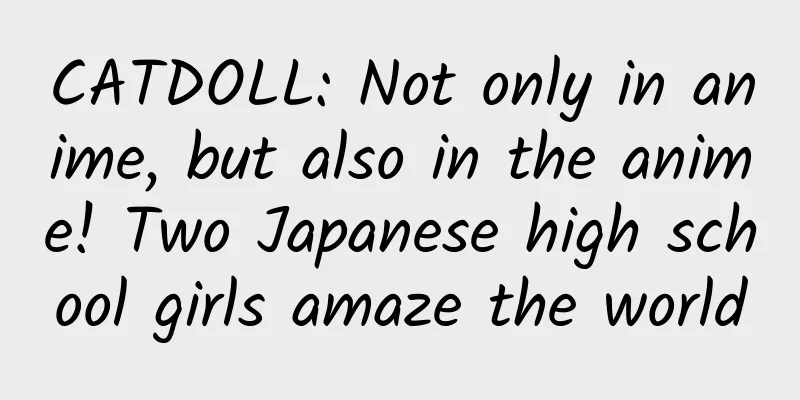CATDOLL: Will domestic animation not survive without government subsidies?

|
Recently, when Great Wall Animation, a listed company, was valuing its restructuring target, Mermaid Animation, it used the government subsidy policy provided by the local government as the basis for its profit assessment assumption, and subsidies have clearly become its main source of financial income. According to the announcement released by Great Wall Animation, a 20% reduction in subsidy income will lead to a 43% reduction in the assessed value of Mermaid Animation. This move not only attracted the attention of regulators, but also exposed the secret of the abnormal development of the entire animation industry: most of my country's animation companies rely on government subsidies to survive, and more than half of the companies get 1/3 of their revenue from government subsidies. How is my country's animation industry developing under the government's strong subsidies? If there is no government subsidy, how will animation companies survive? Government subsidies trigger competition from all walks of life In April 2006, the Ministry of Culture, the Ministry of Information Industry, the State Administration of Radio, Film and Television and ten other ministries jointly issued the "Notice on Several Opinions on Promoting the Development of my country's Animation Industry". The central government also provided financial support with special development funds, fully demonstrating the country's determination to support the animation industry. In order to make the animation creative industry a new economic growth point for the local area, Beijing, Shanghai, Guangdong, Jiangsu, Zhejiang, Sichuan and other provinces and cities have successively introduced local laws and regulations to support the development of the animation industry after the release of the "Notice on Several Opinions on Promoting the Development of my country's Animation Industry", providing strong policy guarantees for animation companies in various links of the industrial chain such as creation and production, film broadcasting, product development, and listing financing. It is understood that local policy support for the animation industry is mainly reflected in three aspects: first, encouraging fixed asset investment in the form of interest subsidies; second, encouraging original animation production in the form of subsidies; and third, encouraging award-winning works in the form of rewards. For example, the "Shanghai Animation and Game Industry Development Support Fund Management Measures (2014 Edition)" clearly states that for excellent original comics, a subsidy of no more than 100,000 yuan will be given for each work; for TV cartoons broadcast during prime time on CCTV and provincial TV stations, a subsidy of no more than 800 yuan or 600 yuan per minute will be given, and for excellent TV animation works broadcast on CCTV, an additional subsidy of 200,000 yuan will be given on top of the minute subsidy; animated films registered (project approved) in Shanghai can receive a subsidy of 100,000 yuan after their release, and for animated films with box office revenue of more than 20 million yuan within one year of their release, an additional subsidy of no more than 700,000 yuan will be given to the top three works at the box office... In addition, for excellent original comics and animation works that are still in the development and production stage or have completed development and production and are still in the publicity and promotion stage, loan interest subsidies, premium subsidies or pre-publicity subsidies will be given on a preferential basis. Under the guidance of preferential policies and the support of subsidy policies, my country's animation industry has entered a period of rapid development. Animation has instantly become one of the hottest and most lively emerging industries. Animation industrial parks have been built in various places, animation cultural festivals are everywhere, and animation companies have sprung up like mushrooms after rain. Public data shows that in Japan, where the animation industry is mature, there are less than 600 animation companies in the country, while there are thousands of animation companies in my country. Subsidies fail to boost industry development Despite generous subsidies from governments at all levels, my country's animation industry does not seem to have achieved the expected results. In order to produce animation products in a short period of time and obtain policy subsidies, some animation companies do not pay attention to the quality of the script and the rhythm of the story, and do not care about the ratings, as long as they can be broadcast; in order to earn more subsidies, some animation companies desperately "water down" the animation, lengthen the minutes, and produce shoddy products. What's worse, some companies ignore market rules and turn to copycats... Industry insiders estimate that the production cycle of a 30-minute cartoon of medium to high quality is generally one month, with a standard of 20 people and a cost of about 400,000 yuan per episode; copycat cartoons often cost only 10,000 yuan per episode, and as long as they are broadcast on TV stations, they can rely on government subsidies to break even. The result of this vicious cycle is that regular animation companies also tend to compress the production cost per episode and per minute to an extremely low level, making it difficult for the industry as a whole to rise. Because of this, the animation industry, which is encouraged by the state, has been developing for many years, but the animation content is still superficial and immature, lacking creativity, and lacking good works for a long time. There are very few animation characters that can be famous. The "China Cultural Brand Development Report (2012)" pointed out that about 85% of domestic animation companies are in a loss-making state, and 70% of mobile Internet game developers are also in a loss-making state. Under such circumstances, the animation industrial parks that were launched in various places at the beginning have been deserted and have been in a state of poor operation. Almost every month, companies in Hefei Animation Base have moved out; at least one-quarter of original animation companies in Wuhan have withdrawn... "It is possible that some companies rely on the policy subsidies provided by the state to survive. In order to obtain government subsidies, they often set up branches in multiple places and leave once the policy preferential period is over." Liu Deliang, chairman of Xinyuan Cultural Industry Club, said. At the same time, animation support policies in many places have been withdrawn one after another. For example, Hubei Province and Wuhan City suspended special support funds for the animation industry in 2012 and 2013 respectively. Subsidy method needs to be improved Liu Deliang introduced that it is an internationally accepted practice for the state to introduce policies to support an industry, especially in its infancy. The United States, Japan, and European countries have all introduced subsidy policies for the animation industry. However, the animation policies of the United States, Japan and European countries are all auxiliary, unlike my country, which adopts large subsidies. In addition, the focus of government support in various countries is also different. For example, Germany's support focuses on the cultivation of small and medium-sized enterprises, tax cuts for creative enterprises, and provides various convenient conditions. However, my country's animation focuses more on large subsidies, and there are obvious misunderstandings in the evaluation criteria, which are more oriented to TV stations - the evaluation criteria for all works are set by TV stations, so there are cases where animation companies and TV stations conspire to "plan" national subsidies, and even some cartoons tailored to the subsidy standards of TV stations have been produced. For example, some TV stations have a subsidy standard of 1,000 yuan per minute, and they make a cost of 600 yuan per minute. Even if there are few viewers, animation companies can easily earn a difference of 400 yuan. Chen Shaofeng, deputy director of the National Institute of Cultural and Creative Industries at Peking University, believes that the approach adopted in this round of state support is too simple, with only scale and quantity as the standard for subsidy issuance, without considering the company's performance, and without a good system to identify the company's true situation. "In the past decade, although the domestic animation industry seems to be lively, there is a lack of outstanding works and companies. The animation industry should still be supported, but the support method should be changed." Chen Shaofeng said that in the future, support for the development of animation companies should focus on tax incentives and expanding their financing. |
<<: CATDOLL: Knights of Sidonia to be shown on Singapore Airlines aircraft
Recommend
CATDOLL: Attack on the Seven Deadly Sins The Seven Deadly Sins poster pays tribute to Attack on Titan
The TV animation "The Seven Deadly Sins"...
CATDOLL: Japanese netizens voted for the most satisfying summer animation, pornographic jokes, and violent deaths
Every time a season of animation is finished, Jap...
CATDOLL: The 28th episode of the animation "Ushio and Tora" shows a girl jumping into the sea of fire
The first episode of the third season of "Us...
CATDOLL: Additional CV for Shirobako released, Chino Ai and Matsuoka Yoshitsugu reunited
The new work directed by Tsutomu Mizushima, the n...
CATDOLL: "Touken Ranbu" musical cast information released
The musical "Touken Ranbu", which is ba...
CATDOLL: The sequel to the light novel "Zero no Tsukaima" written by Mr. Noboru Yamaguchi has been announced
If we talk about the successful cases of light no...
CATDOLL: The first visual image of the instant noodle animation "Move aside, let the most handsome one come" is released
The flash animation "Move aside, let the mos...
CATDOLL: The latest PV of the animation "Monster Strike" is released and will be broadcast online on October 10
Anime Star has previously reported that the mobil...
CATDOLL: The paralyzed producer of "The Idolmaster: Cinderella Girls" was spoofed by netizens as a Fate character
The first episode of The Idolmaster: Cinderella G...
CATDOLL: "My Hero Academia" confirmed to be produced by Bones! Japanese media praises Super Pirate
According to official news, the animation adapted...
CATDOLL: Japanese netizens say Kamehameha in Dragon Ball is useless, sparking heated debate
I remember doing a survey article not long ago to...
CATDOLL: Shimazaki Nobunaga also plays cosplay, the male protagonist has a cool temperament
Sega's latest game in the "Shining"...
CATDOLL: The latest trailer for the Minions movie features a cool female villain
The official trailer for the Minions movie has be...
CATDOLL: The classic game "Castlevania" will be animated again and produced by an American studio
KONAMI's well-known game series "Castlev...
CATDOLL: "Attribute Doll Club" OAD comic volume 9 will be released on the 23rd
The work "Fujo High School First Year Game C...









